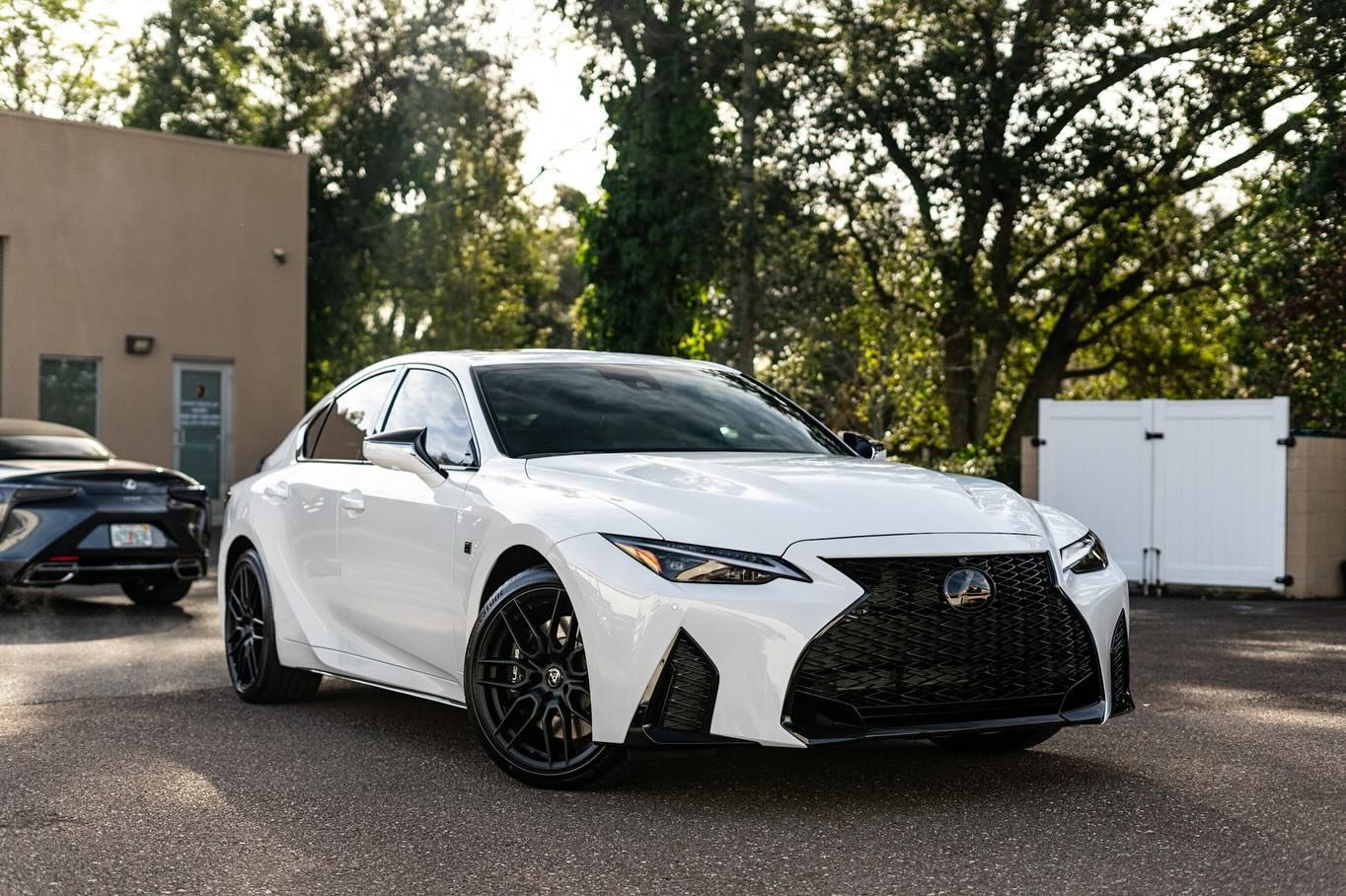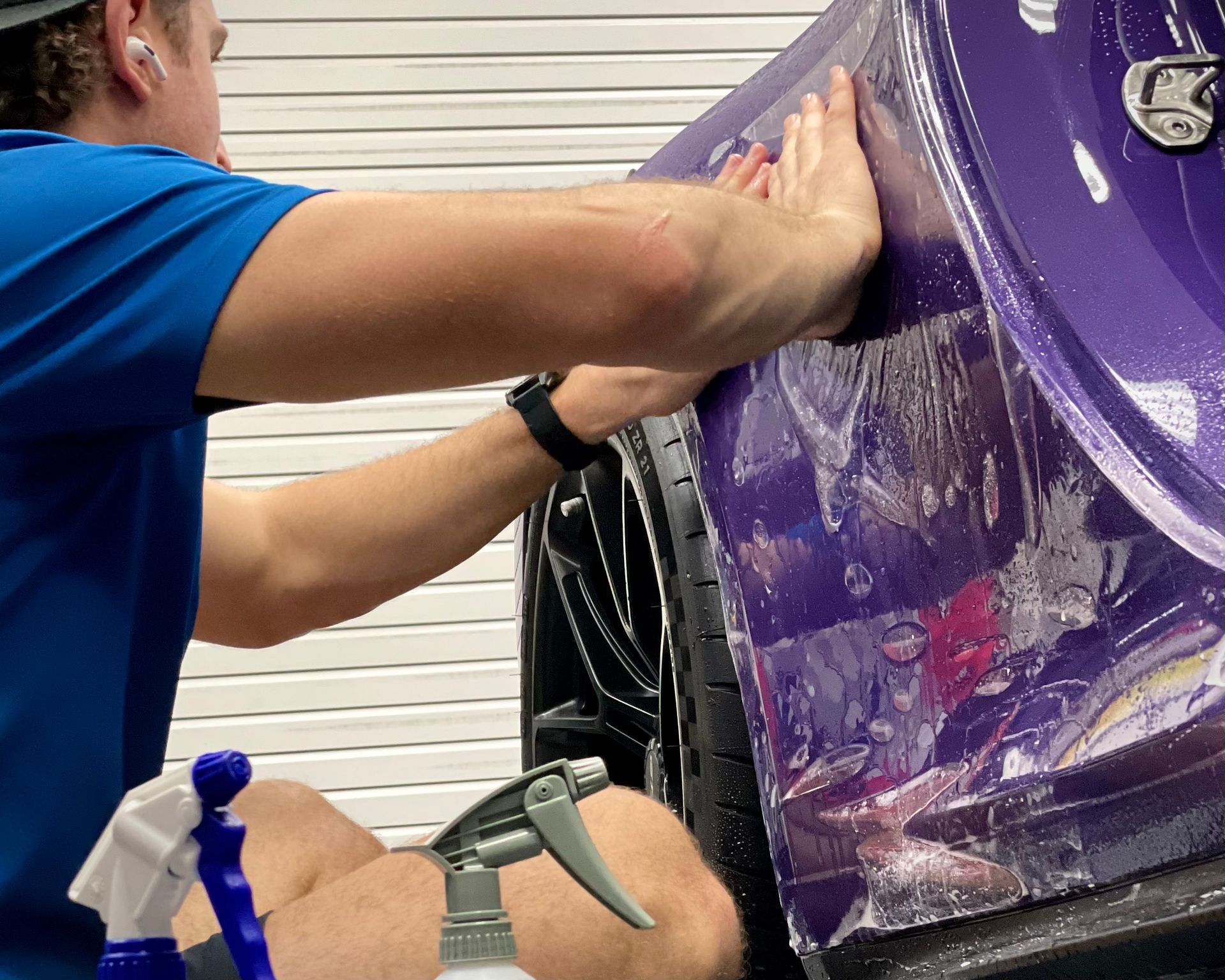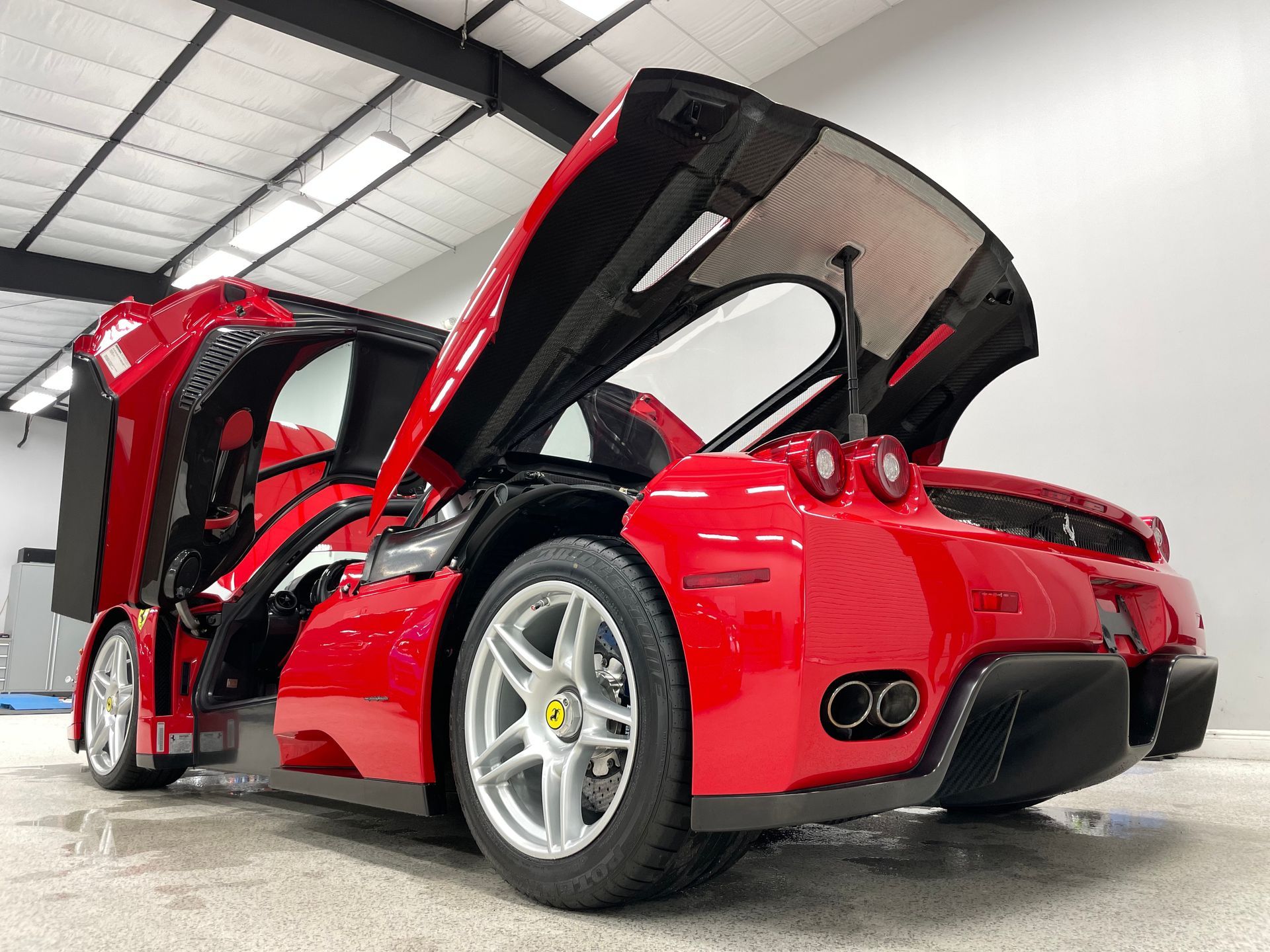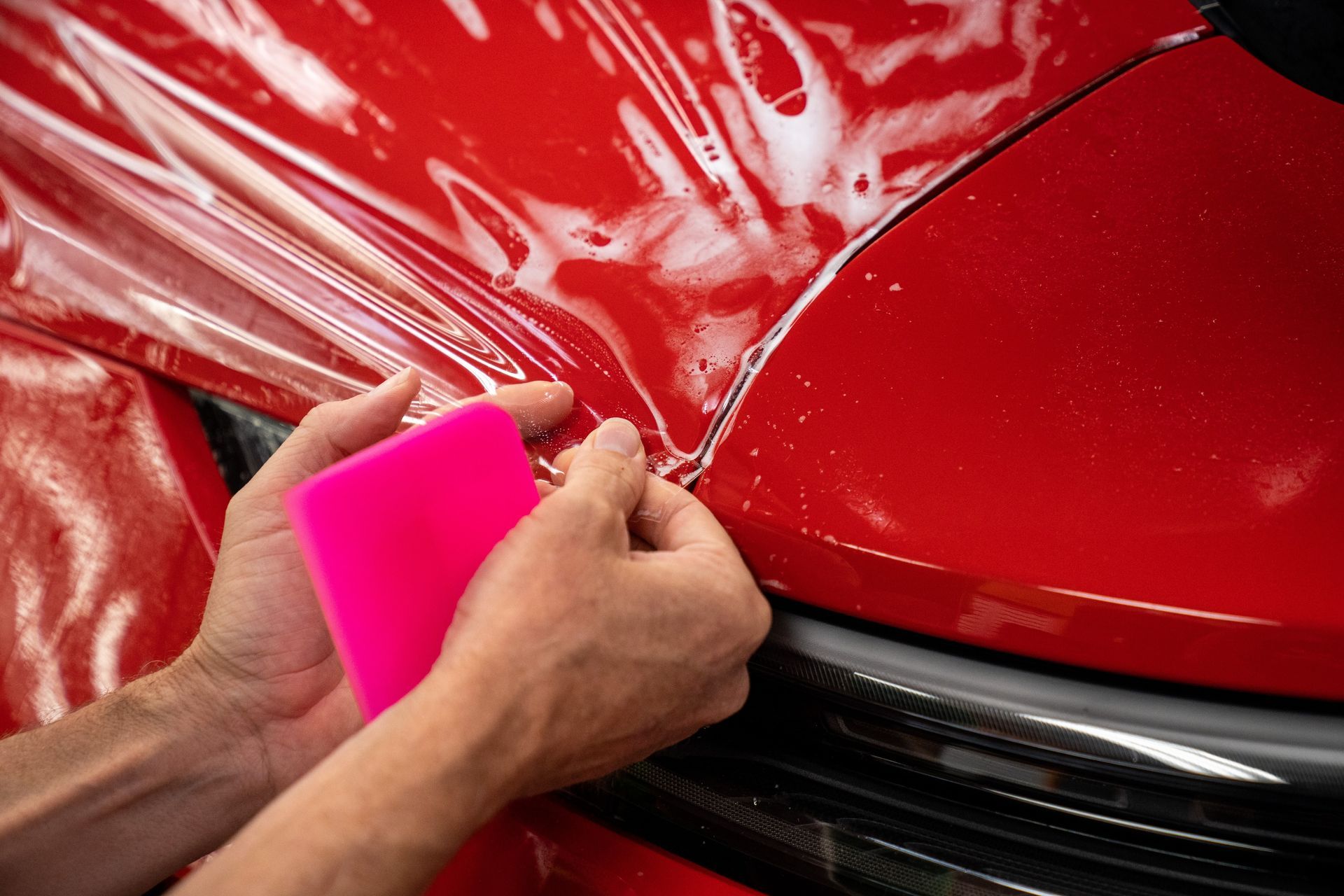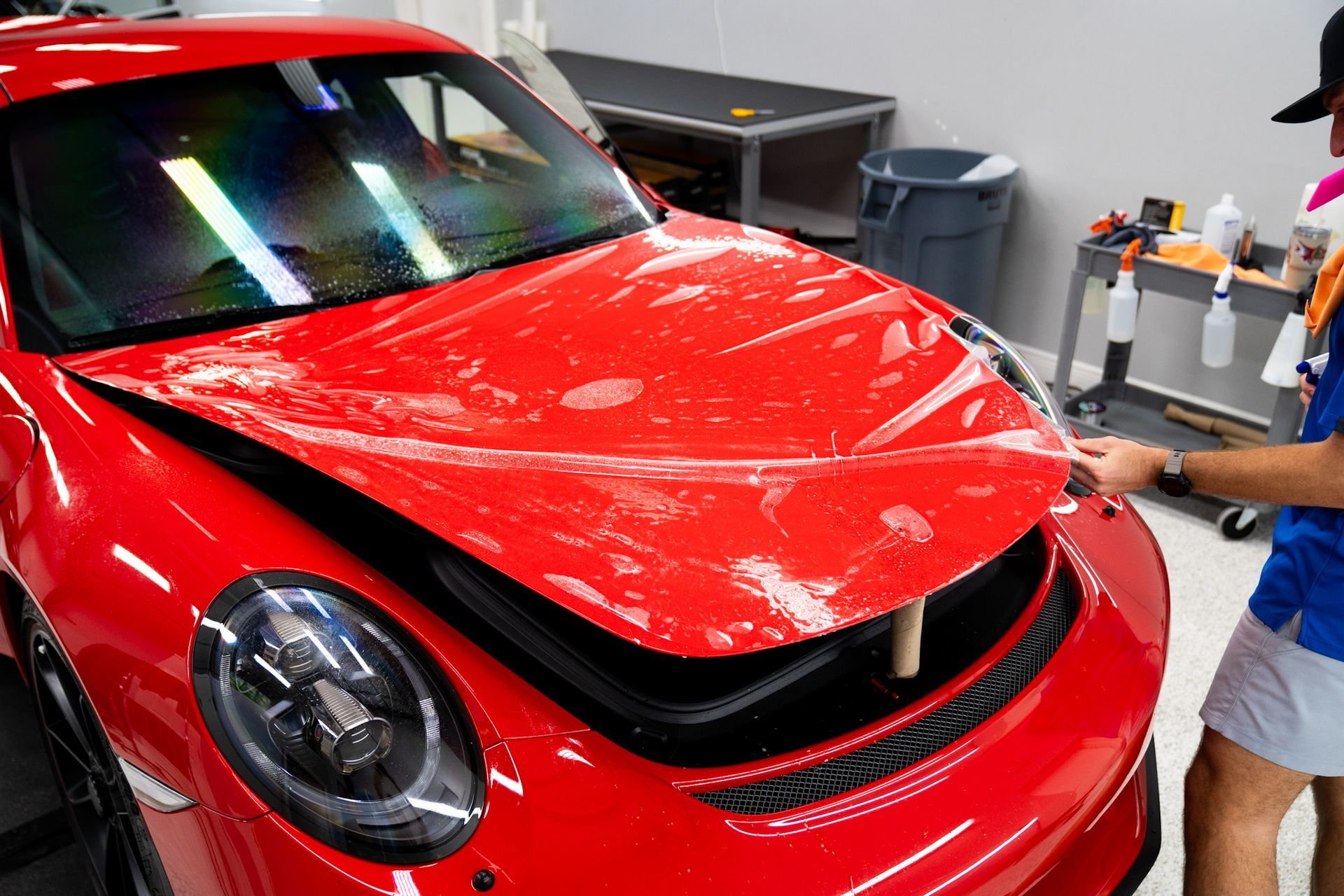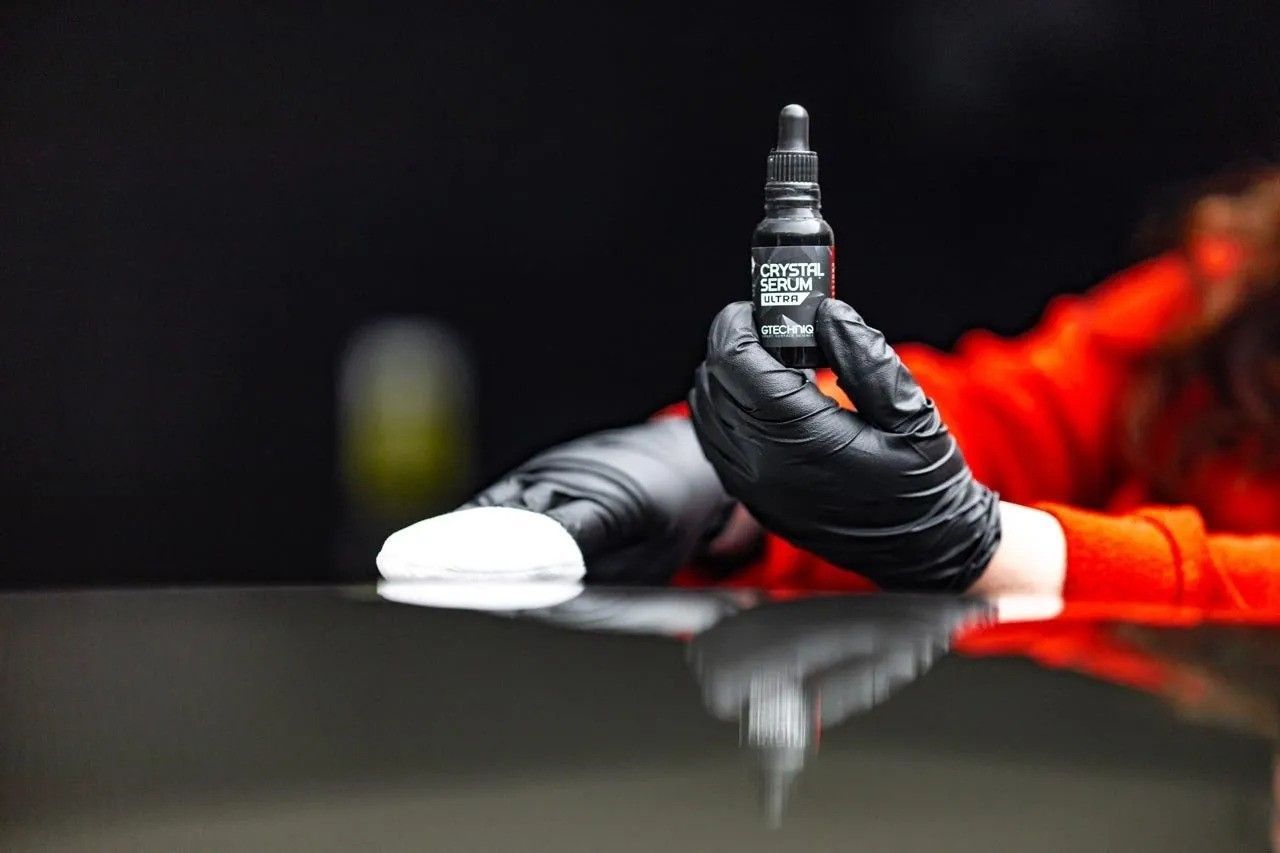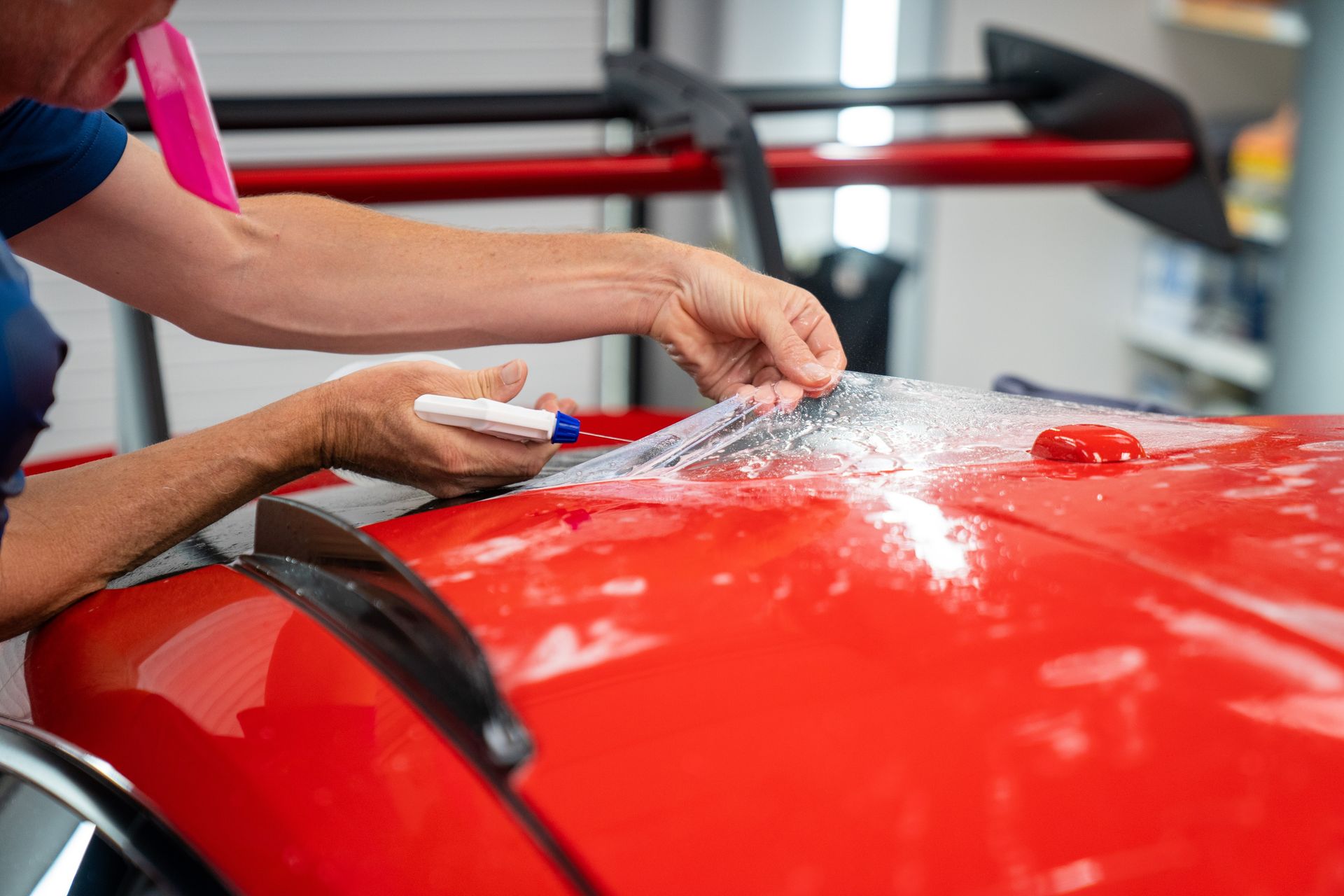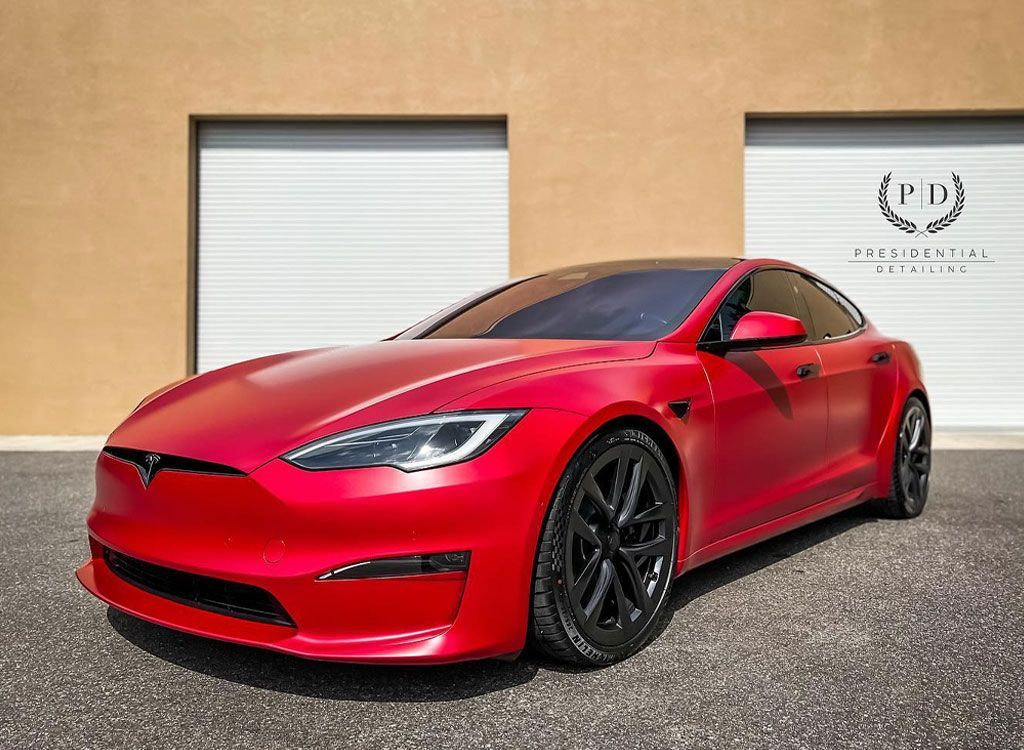Ceramic Coating: The Effect on Water Spot Resistance and Protecting Your Car
CALL (813) 723-9679
GET A FREE ESTIMATEProtecting your vehicle’s paint from water spots can be a persistent challenge. It is not uncommon to wash a car, only to notice unsightly blemishes reappear after exposure to rain. This is where ceramic coatings offer a significant advantage, providing an advanced layer of defense against mineral deposits and waterborne contaminants. By forming a hydrophobic surface, ceramic coatings help repel water effectively while simplifying routine cleaning and maintenance.
Ceramic coatings significantly enhance a vehicle's water spot resistance by creating a hydrophobic surface, which causes water to bead and slide off more easily. However, while they provide better protection against water spots than traditional waxes or sealants, they are not completely impervious; prolonged exposure to water can still lead to mineral deposits forming into spots, especially if the vehicle is not regularly washed.
Water Spot Resistance in Ceramic Coatings
Water spots are more than just an unsightly nuisance—they occur when water evaporates and leaves behind mineral deposits that cling to your vehicle’s paint. As the water dries, these minerals can bond to the surface, creating stubborn spots that are difficult to remove. This phenomenon is especially common when cars are washed and left to air dry, allowing residue to settle and harden. Being mindful of how water interacts with your vehicle’s surface is an important part of maintaining a clean, well-protected finish.
Ceramic Coating’s Role
Ceramic coatings act like a protective shield for your car's paintwork. They create a long-lasting layer that enhances hydrophobicity, meaning water beads up and rolls off rather than spreading across the surface. This effect is due to a higher contact angle, typically ranging from 100 to 110 degrees, making it harder for water to cling to the coated surface—unlike traditional waxes, which have lower contact angles. As a result, vehicles treated with ceramic coatings often experience a noticeable reduction in water spot formation. However, these coatings are not entirely foolproof. Prolonged exposure to the elements or allowing hard water to dry on the surface can still result in spotting. Some drivers mistakenly assume that ceramic coatings make their cars completely immune to blemishes, but consistent maintenance is still necessary. Regular washing—ideally on a weekly basis—is key to managing contaminants and minimizing spot formation. For those who park outdoors or live in areas with mineral-rich water, additional care measures such as using gentle, acidic car shampoos can help remove deposits before they bond to the surface.
Hydrophobic Benefits for Car Protection
The magic of ceramic coatings lies in their ability to create a surface that water simply does not want to cling to. This phenomenon is known as hydrophobic behavior, which translates to "water-fearing." When you apply a ceramic coating to your vehicle's paint, you're effectively enhancing its ability to repel water. Picture this: after a rainfall, instead of beads of water pooling and leaving spots on your car, you'll see droplets effortlessly rolling off, leaving behind an impeccably clean surface.
Key Hydrophobic Traits
The primary reason for this remarkable effect is the microscopic structure of ceramic coatings. These coatings form a smooth, tightly packed layer over the car's surface that minimizes the contact area with water. With a contact angle that can reach up to 110 degrees, water tends to bead up rather than spread out. This characteristic keeps the vehicle looking newer for longer by preventing dirt and contaminants from embedding deeply into the paintwork. It's as if your car has been granted a protective shield, universally disliked by moisture but adored by car enthusiasts.
In practical terms, the advantages become strikingly evident in daily life. After a rainstorm, a ceramic-coated car dries quicker than its uncoated peers and is also less susceptible to trapping grime and dirt. As the water beads and rolls away, much of the debris that would otherwise be left clinging to the paint is removed as well. Furthermore, such removal means that routine washing becomes less labor-intensive because contaminants don’t settle into the surface as much. While these hydrophobic properties enhance protection significantly, they don't serve as a complete solution for safeguarding your vehicle's finish. Understanding performance metrics will help fully appreciate how these coatings hold up under various conditions.
Evaluating Ceramic Coating Performance
When considering ceramic coating for your vehicle, it's important to understand how to evaluate its effectiveness beyond just the glossy finish. True performance lies in factors like longevity, ease of maintenance, and consistency of protection over time. This breakdown will walk you through the key elements that define a high-performing ceramic coating and help you determine if your coating is delivering the results you expected:
- Longevity and Durability: One of the most valuable benefits of ceramic coating is its impressive lifespan. A quality ceramic coating can last anywhere from two to five years—or even longer—with proper care. This long-term protection means your vehicle stays cleaner, shinier, and better shielded from environmental contaminants like UV rays, acid rain, and bird droppings.
- Ease of Maintenance: Ceramic coatings are designed to create a hydrophobic surface, meaning they repel water and prevent dirt from bonding easily to the paint. As a result, washing your car becomes significantly easier and less time-consuming. Often, a simple rinse can remove most surface contaminants, and even stubborn grime wipes off with minimal effort. This ease of maintenance is a game-changer for busy car owners who still want their vehicles to look their best.
- Protection Against Environmental Damage: A well-applied ceramic coating provides excellent resistance to common forms of paint damage. Whether it’s UV-induced fading, bird droppings, tree sap, or road grime, the coating acts as a sacrificial barrier that absorbs the brunt of these elements. This level of protection helps preserve your car’s color and paint depth for years, particularly in harsh climates. For those who park outdoors or live in areas with extreme weather, this added layer of defense can make a noticeable difference in how your car ages over time.
- Visual Appeal and Gloss Retention: Ceramic coatings do more than protect—they enhance. One of their most visually satisfying traits is the deep, reflective gloss they create, which tends to last longer than what you’d see with wax or sealant. This gloss retention is due to the hardness and smoothness of the coating, which resists oxidation. Many users find their vehicles appear freshly detailed even months after application, making ceramic coatings a top choice for anyone who values a striking visual impression.
Ceramic coatings offer a powerful blend of long-term protection, reduced maintenance, and high-gloss aesthetics. When applied and maintained properly, ceramic coatings significantly surpass traditional waxes in every significant category. From easier cleaning routines to enhanced UV resistance, ceramic coatings provide real value for drivers who want to protect and preserve their vehicle's finish. Evaluating your coating’s performance through durability, ease of upkeep, and visual results will help you ensure your investment continues to pay off for years to come.
Comparing Ceramic Coatings to Waxes
Wax versus ceramic coatings isn’t just a simple choice; it represents two differing philosophies of vehicle care. Each option holds its set of advantages and disadvantages depending on what you're looking to achieve with your car’s protective finish. At the heart of this discussion lies an essential truth: the level of durability each product offers.
Performance Comparison
- Durability: One of the most striking differences is how long they last. Ceramic coatings are engineered to withstand the test of time, offering protection that can extend from one year to five years or even longer when properly maintained. Typically, traditional wax shines for only three to six months, necessitating regular reapplication to maintain the protective layer.
- Protection Layer: A ceramic coating creates a durable layer that chemically bonds with the paint, resulting in high resistance against UV rays and environmental contaminants. This hard shell protects and enhances the car's overall look. Wax, while it does provide a certain level of shine and protection, adds only a temporary soft layer that can be easily washed away or compromised.
- Ease of Application: An important aspect for many is application ease. Wax can be quickly applied by hand or polisher, making it an attractive option for those who prefer to spend less time worrying about their car's finish and more time enjoying it. Ceramic coatings, however, necessitate meticulous preparation and application practices—often requiring surface decontamination before any product touches the vehicle. Therefore, while the initial process may seem daunting, the benefits often justify the effort.
Cost Implications
While ceramic coatings have a steeper initial cost due to their advanced technology and labor-intensive application process, they prove themselves economically advantageous over time by minimizing maintenance. As they require fewer periodic reapplications than wax—whereby drivers might find themselves spending money every few months—the long-term investment in ceramic can lead to substantial savings. Waxes certainly appeal to those seeking an economical upfront option; however, one should consider how these frequent applications add up over the lifespan of the vehicle. These distinctions between wax and ceramic create a spectrum of choices for car enthusiasts and everyday drivers alike. Whether you prioritize a quick fix or are willing to invest in durability will largely influence your decision regarding which protective system best meets your needs. With thoughtful consideration of performance and costs, you can select the approach that aligns with both your financial goals and personal preferences for vehicle care.
Maintaining Ceramic Coated Cars
A ceramic-coated car isn’t exactly maintenance-free; rather, it offers a unique combination of advanced protection and simplified care. The beauty of these coatings lies in their ability to repel water, dirt, and grime, but taking care of your investment remains essential for long-lasting performance. Routine upkeep is vital. It’s somewhat like nurturing a garden—you can’t just plant seeds and walk away; you need to tend to them regularly to see the fruits of your labor.
Routine Care
To maintain the effectiveness of a ceramic coating, using pH-neutral car shampoos is critical. These specialized soaps are formulated within a pH range of 6-8, which avoids degradation of the coating while cleaning away dirt and contaminants. It's crucial to steer clear of abrasive cleaners, as they have the potential to damage the surface or remove the protective layer. Regular washing frequency should ideally be every 2-4 weeks—not only will this keep your vehicle sparkling but also minimize any chances of water spots forming, especially if your car is frequently parked outside and exposed to environmental elements. Think of it as keeping the surface ‘breathable’ and ready to repel newcomers!
Special Products
Incorporating specialized products into your maintenance routine can significantly enhance your car's appearance and help preserve the integrity of its ceramic coating. High-quality maintenance solutions go beyond basic car shampoos—they are formulated to work in harmony with ceramic coatings, boosting their hydrophobic effects while reinforcing the protective layer. Having a reliable spot remover on hand is also beneficial for addressing stubborn marks without compromising the coating. Maintaining a coated vehicle should feel like giving it a spa treatment: a gentle, rejuvenating process that keeps the finish looking fresh without using harsh abrasives. It’s important to address a common misconception—while ceramic coatings offer impressive water-beading abilities, water spots can still form if droplets are left to dry, especially during prolonged exposure to rain or hard water. That’s why a consistent maintenance routine is essential, particularly for vehicles parked outdoors or exposed to the elements regularly!
Keeping microfiber towels handy for drying will also help prevent water spots during the drying process. No one wants to accidentally tarnish their painstakingly applied coating! Finally, don't forget that applying maintenance sprays every 3-6 months is key; these products can refresh the coating’s hydrophobic properties and extend its lifespan significantly. Investing a small amount of time in this basic maintenance not only enhances the appearance of your vehicle but also maximizes your investment in its protection—no one wants their hard-earned money to disappear. With these tips in mind, it's clear that maintaining a ceramic-coated car doesn’t have to be daunting; instead, it’s an opportunity to showcase and prolong beauty!
Ultimately, regular maintenance protects your investment and enhances the aesthetic appeal of your vehicle, ensuring it remains a standout on any road.
Tampa’s Trusted Ceramic Coating Experts
Preserve your vehicle’s flawless finish with Presidential Automotive Detailing—Tampa’s go-to destination for
premium ceramic coating services. Our expert team applies high-performance coatings that defend against UV rays, road grime, and water spots while enhancing your car’s long-term gloss and clarity. Whether you’re protecting a daily driver or a weekend showpiece, we tailor every treatment for lasting results and a mirror-like shine.
Book your appointment today and experience the protection your vehicle deserves!


